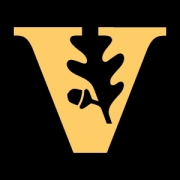Alvocidib, Cytarabine, and Mitoxantrone Hydrochloride or Cytarabine and Daunorubicin Hydrochloride in Treating Patients With Newly Diagnosed Acute Myeloid Leukemia
| Status: | Recruiting |
|---|---|
| Conditions: | Blood Cancer, Women's Studies, Hematology |
| Therapuetic Areas: | Hematology, Oncology, Reproductive |
| Healthy: | No |
| Age Range: | 18 - 70 |
| Updated: | 1/1/2014 |
| Start Date: | April 2011 |
Randomized Phase II Trial of Timed Sequential Therapy (TST) With Alvocidib (Flavopiridol), Ara-C and Mitoxantrone (FLAM) vs. "7+3" for Adults Age 70 and Under With Newly Diagnosed Acute Myelogenous Leukemia (AML)
This randomized phase II trial is studying how alvocidib, cytarabine, and mitoxantrone
hydrochloride work compared to cytarabine and daunorubicin hydrochloride in treating
patients with newly diagnosed acute myeloid leukemia. Alvocidib may stop the growth of
cancer cells by blocking some of the enzymes needed for cell growth. Drugs used in
chemotherapy, such as cytarabine, mitoxantrone hydrochloride, and daunorubicin hydrochloride
work in different ways to stop the growth of cancer cells, either by killing the cells or by
stopping them from dividing. It is not yet known whether giving alvocidib, cytarabine, and
mitoxantrone hydrochloride is more effective than giving cytarabine and daunorubicin
hydrochloride in treating patients with acute myeloid leukemia.
hydrochloride work compared to cytarabine and daunorubicin hydrochloride in treating
patients with newly diagnosed acute myeloid leukemia. Alvocidib may stop the growth of
cancer cells by blocking some of the enzymes needed for cell growth. Drugs used in
chemotherapy, such as cytarabine, mitoxantrone hydrochloride, and daunorubicin hydrochloride
work in different ways to stop the growth of cancer cells, either by killing the cells or by
stopping them from dividing. It is not yet known whether giving alvocidib, cytarabine, and
mitoxantrone hydrochloride is more effective than giving cytarabine and daunorubicin
hydrochloride in treating patients with acute myeloid leukemia.
PRIMARY OBJECTIVES:
I. To compare the rate of complete remission (CR) after 1 course of induction therapy with
the timed-sequential combination of alvocidib (flavopiridol), cytarabine (cytosine
arabinoside [ara-C]), and mitoxantrone hydrochloride (FLAM) vs traditional "7+3" cytarabine
and daunorubicin hydrochloride (ara-C + Daunorubicin) for adults (age 18 to 70) with newly
diagnosed, previously untreated, intermediate-risk or poor-risk acute myelogenous leukemia
(AML).
SECONDARY OBJECTIVES:
I. To evaluate and compare the toxicities of FLAM vs 7+3. II. To compare the 2-year
disease-free survival (DFS) and overall survival (OS) in response to FLAM vs 7+3.
III. To detect and compare the presence of minimal-residual disease (MRD) remaining after
FLAM vs 7+3.
IV. To determine the expression of ABC transport proteins multidrug resistance 1 (MDR1,
ABCB1) and breast cancer resistance protein (BCRP, ABCG2) on AML blasts pretreatment and
correlate the expressions of one or both proteins with CR and DFS in response to FLAM vs
7+3.
OUTLINE: This is a multicenter study. Patients are stratified according to risk features:
age (< 50 vs >= 50), secondary AML (pre-existing myelodysplatic syndrome [MDS],
myeloproliferative diseases [MPD], treatment-related [t]-AML, or severe multi-lineage
dysplasia) and/or known adverse cytogenetics, and hyperleukocytosis (white blood cells [WBC]
>= 50,000/mm^3). Patients are randomized to 1 of 2 treatment arms.
ARM I: Patients receive alvocidib intravenously (IV) over 1 hour on days 1-3, cytarabine IV
over 72 hours on days 6-8, and mitoxantrone hydrochloride IV over 1-2 hours on day 9.
Patients who achieve complete or partial response to the first course (completion of all
doses) may receive a second course of treatment or high-dose cytarabine after 21-63 days
following blood count recovery, and/or undergo allogeneic bone marrow transplant.
ARM II: Patients receive cytarabine IV continuously on days 1-7 and daunorubicin
hydrochloride IV on days 1-3. Patients who have residual disease on day 14 may receive
additional cytarabine for 5 days and daunorubicin hydrochloride for 2 days. Patients may
undergo blood and bone marrow collection for correlative studies.
After completion of study therapy, patients are followed up every 3 months for 2 years,
every 6 months for 5 years, and then annually thereafter.
I. To compare the rate of complete remission (CR) after 1 course of induction therapy with
the timed-sequential combination of alvocidib (flavopiridol), cytarabine (cytosine
arabinoside [ara-C]), and mitoxantrone hydrochloride (FLAM) vs traditional "7+3" cytarabine
and daunorubicin hydrochloride (ara-C + Daunorubicin) for adults (age 18 to 70) with newly
diagnosed, previously untreated, intermediate-risk or poor-risk acute myelogenous leukemia
(AML).
SECONDARY OBJECTIVES:
I. To evaluate and compare the toxicities of FLAM vs 7+3. II. To compare the 2-year
disease-free survival (DFS) and overall survival (OS) in response to FLAM vs 7+3.
III. To detect and compare the presence of minimal-residual disease (MRD) remaining after
FLAM vs 7+3.
IV. To determine the expression of ABC transport proteins multidrug resistance 1 (MDR1,
ABCB1) and breast cancer resistance protein (BCRP, ABCG2) on AML blasts pretreatment and
correlate the expressions of one or both proteins with CR and DFS in response to FLAM vs
7+3.
OUTLINE: This is a multicenter study. Patients are stratified according to risk features:
age (< 50 vs >= 50), secondary AML (pre-existing myelodysplatic syndrome [MDS],
myeloproliferative diseases [MPD], treatment-related [t]-AML, or severe multi-lineage
dysplasia) and/or known adverse cytogenetics, and hyperleukocytosis (white blood cells [WBC]
>= 50,000/mm^3). Patients are randomized to 1 of 2 treatment arms.
ARM I: Patients receive alvocidib intravenously (IV) over 1 hour on days 1-3, cytarabine IV
over 72 hours on days 6-8, and mitoxantrone hydrochloride IV over 1-2 hours on day 9.
Patients who achieve complete or partial response to the first course (completion of all
doses) may receive a second course of treatment or high-dose cytarabine after 21-63 days
following blood count recovery, and/or undergo allogeneic bone marrow transplant.
ARM II: Patients receive cytarabine IV continuously on days 1-7 and daunorubicin
hydrochloride IV on days 1-3. Patients who have residual disease on day 14 may receive
additional cytarabine for 5 days and daunorubicin hydrochloride for 2 days. Patients may
undergo blood and bone marrow collection for correlative studies.
After completion of study therapy, patients are followed up every 3 months for 2 years,
every 6 months for 5 years, and then annually thereafter.
Inclusion Criteria:
- All adults with established, pathologically confirmed diagnoses of newly diagnosed
AML and adults with newly diagnosed AML, excluding newly diagnosed core-binding
factor (CBF) AMLs and acute progranulocytic leukemia (APL, M3), will be considered
eligible for study
- Eastern Cooperative Oncology Group (ECOG) performance status (PS) 0-3
- Patients >= 65 years of age must have ECOG PS =< 2 prior to developing leukemic
symptoms
- Serum creatinine ≤ 2.0 mg/dL
- Alanine aminotransferase (ALT)/aspartate aminotransferase (AST) =< 5 times upper
limit of normal (ULN) (unless leukemic infiltration)
- Total bilirubin =< 2.0 mg/dL (unless Gilbert disease, hemolysis, or leukemia)
- Left ventricular ejection fraction ≥ 45%
- Newly diagnosed AML, subtypes M0, 1, 2, 4-7 but excluding M3 (APL), including those
with the following poor risk features:
- Antecedent hematologic disorder including myelodysplasia (MDS)-related AML
(MDS/AML) and prior myeloproliferative disorder (MPD)
- Treatment-related myeloid neoplasms (t-AML/t-MDS)
- Myeloid sarcoma, myeloid proliferations related to Down Syndrome, and blastic
plasmacytoid dendritic cell neoplasm
- AML with multilineage dysplasia (AML-MLD)
- Adverse cytogenetics (defined as -5/-5q; -7/-7q; abnormal 3q, 9q, 11q, 20q, 21q,
or 17p; t(6;9); t(9;22); trisomy 8; trisomy 13; trisomy 21; and complex
karyotypes (≥ 3 unrelated abnormalities)
- Patients who have received hydroxyurea alone or have received non-cytotoxic therapies
previously for myelodysplasia (MDS) or myeloproliferative disorder (MPD) (e.g.,
thalidomide or lenalidomide, interferon, cytokines, 5-azacytidine or decitabine,
histone deacetylase inhibitors, low-dose cyclophosphamide [cytoxan], tyrosine kinase
[TK] or dual TK/src inhibitors) will be eligible for this trial
- At least 24 hours since prior leukopheresis or hydroxyurea for cytoreduction
Exclusion Criteria:
- Any previous treatment with flavopiridol
- Concomitant chemotherapy, radiation therapy, or immunotherapy
- Hyperleukocytosis with >= 50,000 blasts/uL; leukopheresis or hydroxyurea may be used
immediately prior to study drug administration for cytoreduction; must be stopped 24
hours before first dose of study chemotherapy
- CBF AMLs associated with t(8;21) or M4eo subtype (inv[16] or t[16;16]), as diagnosed
by morphologic criteria, flow cytometric characteristics, and rapid cytogenetics or
FISH or molecular testing
- Acute Progranulocytic Leukemia (APL, M3)
- Active central nervous system (CNS) leukemia
- Active, uncontrolled infection; patients with infection under active treatment and
controlled with antibiotics are eligible
- Active, uncontrolled graft vs. host disease (GVHD) following allogeneic transplant
for non-AML condition (e.g. MDS, lymphoid malignancy, aplastic anemia); patients with
GVHD controlled on stable doses of immunosuppressants are eligible
- Presence of other life-threatening illness
- Patients with mental deficits and/or psychiatric history that preclude them form
giving informed consent or from following protocol
- Pregnant and nursing patients are excluded
We found this trial at
12
sites
Click here to add this to my saved trials
Johns Hopkins University The Johns Hopkins University opened in 1876, with the inauguration of its...
Click here to add this to my saved trials
Baylor University Medical Center Baylor University Medical Center in Dallas, TX is ranked nationally in...
Click here to add this to my saved trials
Vanderbilt-Ingram Cancer Center The Vanderbilt-Ingram Cancer Center, located in Nashville, Tenn., brings together the clinical...
Click here to add this to my saved trials
12902 USF Magnolia Dr
Tampa, Florida 33612
Tampa, Florida 33612
(888) 663-3488

H. Lee Moffitt Cancer Center & Research Institute Moffitt Cancer Center in Tampa, Florida, has...
Click here to add this to my saved trials
22 South Greene Street
Baltimore, Maryland 21201
Baltimore, Maryland 21201
410-328-7904

University of Maryland Greenebaum Cancer Center The University of Maryland Marlene and Stewart Greenebaum Cancer...
Click here to add this to my saved trials
Univ of North Carolina Carolina’s vibrant people and programs attest to the University’s long-standing place...
Click here to add this to my saved trials
171 Ashley Avenue
Charleston, South Carolina 29425
Charleston, South Carolina 29425
843-792-1414

Medical University of South Carolina The Medical University of South Carolina (MUSC) has grown from...
Click here to add this to my saved trials
5841 S Maryland Ave
Chicago, Illinois 60637
Chicago, Illinois 60637
1-773-702-6180

University of Chicago Comprehensive Cancer Center The University of Chicago Comprehensive Cancer Center (UCCCC) is...
Click here to add this to my saved trials
Virginia Commonwealth University Since our founding as a medical school in 1838, Virginia Commonwealth University...
Click here to add this to my saved trials
Mayo Clinic Rochester Mayo Clinic is a nonprofit worldwide leader in medical care, research and...
Click here to add this to my saved trials
Click here to add this to my saved trials





